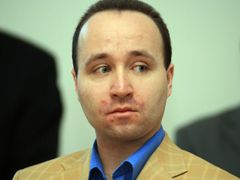Brno - Regional Court in Brno yesterday gave its ruling in the largest case of painting forgery in the Czech Republic´s history. It involved counterfeiting over 150 art pieces worth of millions.
The alleged leader of the group of conmen was sent to jail for three years, two of his accomplices received suspended sentences and one was acquitted.
The relative lightness of the sentences for what was described as a serious fraudster operation was explained by the judge as a result of a sloppy job of prosecution, which did not build the case properly, although the crimes were allegedly apparent.
"Possessed by a spirit"
One of the suspended sentences went to a self-taught painter Libor Prášil, whose paintings were described as "a work of genius" by some of the experts familiar with the case.
Prášil created 31 forgeries of Jan Zrzavý´s paintings - not copies of existing pieces, but completely new paintings created in the style of the popular 20th centrury Czech master.
He would sell these to middlemen for hundreds of euro who in turn sold the works as Zrzavý´s supposedly unknown originals to collectors for tens of thousands. Even renowned experts believed the paintings to be genuine.
"I wasn't aware of my paintings being sold as Zrzavý's originals," Prášil defended himself. He also said that the spirit of Zrzavý possessed him during his painting sessions.
Expertly paid not to see?
There were other forgers as well involved in the conspiracy, counterfeiting the paintings of Vojtěch Sedláček, Kristián Kodet, Ota Janeček and other artists.
Altogether, the gang, led by a self-proclaimed art-historian Jan Trojan, produced approximately one hundred and fifty paintings.
The case also brought attention to a problematic role of experts, who are paid to authenticate a piece of art.
Providing they swear to have acted "in good faith", experts face no penalization when their judgments are proven wrong. They can be deprived of their status of experts only when they admit to have given a wrong opinion knowingly.
"An expert can be wrong. And in this case, the forger was very able. He managed to put himself in the place of the alleged author perfectly," said authorized expert on art, defending his colleagues.
But he admitted that corruption among some of the authorized experts is quite evident.







